BRUSHLESS MOTORS
As mentioned during my presentation, my notes are primarily to help you select, install and operate a brushless motor suited to your application – a quick search via Google will find many articles on the operating principles, perhaps even too much information !
Motor Types + Specifications :
Outrunner – identified by the outer casing containing magnets rotating around the electronic stators or poles are they are often termed. Designed originally for aero/heli use with an integral cooling fan and the drive shaft typically exiting through the mounting face (if the motor shaft exists the other side then just turn the motor around on the bracket as shown in the photo below)
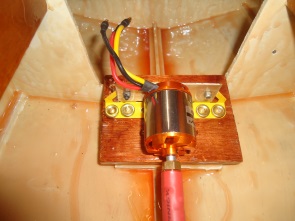
Inrunner – identified by the outer casing being static which houses the electronic stators with the magnets being attached to the inner rotating drive shaft. Suited to boat operation providing a water cooling jacket or coil is fitted around the casing as there is no provision for fan cooling
Similarly east to install
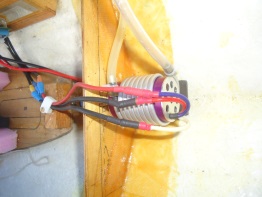
Pros and Cons :
# Outrunners have more torque due to the increased distance from the drive shaft to the magnets ie greater leverage is applied to the moving member (if you recall a bit of your schoolboy physics!)
# Inrunners are quieter but many boaters like myself find the turbine like howl of a well installed Outrunner at speed addictive….
In a twin or triple installation each brushless motor requires its own speed controller, so factor the cost and space needed when planning your power set up, control being via either multiple recievers (unusual and costly) or simply placing one or re more Y leads between the receiver each speed controller to link each to the receiver throttle signal
Motor Selection
I have tried here to compare some types of brushed motors most members will be familiar with and indicate a brushless equivalent providing the similar – or ususally significantly more power and/or lower battery power consumption – to take its place
The key pieces of info you need to look at when selecting a brushless motor are its dimensions and KV rating :
- Its size is noted by the four digits in its spec so with a ‘2213’ then ‘22’ is the casing dia in mm and ‘13’ the motor length also in mm
- its operating max speed will be the the Kv shown x whatever voltage you operate the motor with ie a 1000 Kv motor running on 12v will turn at a maximum of 12,000 RPM whereas a 500 Kv motor will turn at 6000 RPM on 12v
For planing type hulls, we usually look for a motor rated between 1000 and 1500 Kv, therefore ensuring we can use the same battery packs already in our possession or generally available today and can maintain propshaft speed and prop sizes similar that used for familiar brushed motor applications
- Brushed 380/400/600 types fitted to planing or semi planing hulls from 18 to 31 ins waterline length
Consider a KD2209 0r 2213 Outrunner
Same shaft size and uses the same type of plastic or pressed metal mounting as the 380/400
Here is a KD2213 installed in my 1962 vintage Aerokits 18in Sea Nymph, replacing the original Kako brushed motor with excellent results
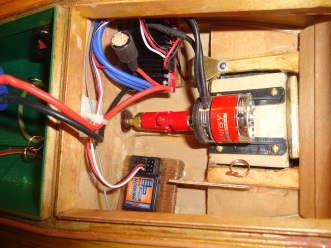
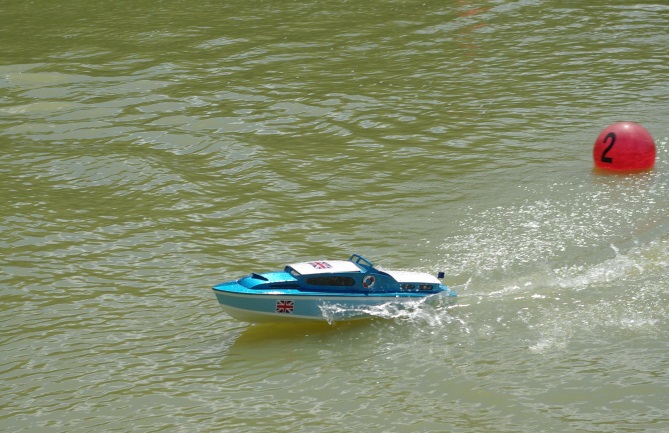
- Large Brushed Motors such as the MFA850 or Johnson 900 in planing or semi planing hull 31 ins or larger
Consider a Turnigy 3548/1100 Kv which bolts directly to a standard 500/600 mounting
Here is a 3548 installed in my 1955 Vintage Yeoman 34in Wavemaster with good results
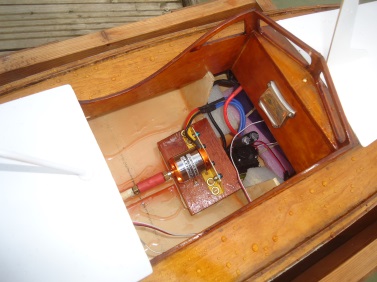
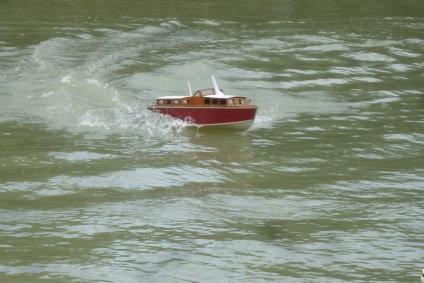
or for those needing power levels closer to the top end of the brushed motor types indicated then the NTM Series range could be the right choice
Here is a twin NTM 3548 set up in my Perkasa 49 in with good results
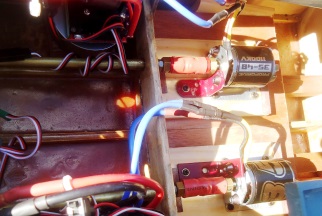
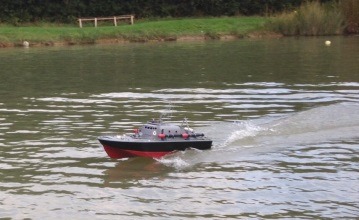
- low speed displacement type hulls such as tugs or pushboats using MFA800 or similar low rpm brushed motors
Consider a larger dia and lower Kv brushless motor such as this NTM type with just 500 Kv so effectively a direct replacement for an MFA800 and can use the same gelcell or Nimh battery pack as the brushed MFA800
SPEED CONTROLLERS OR ESCs
Two types of ESC can be used successfully in our model boats :
- car type air cooled ESCs such as the Hobbyking range
- Relatively low cost
- Very smooth operation
- Instant reverse for rapid slowdown or your boat
- Need to protect against splashed water and out of potentially wet bilge areas
- Smaller brushless motor types such as the ’22..’ series mentioned earlier can use either the 30 amp version (or the 45 amp version with fan cooling for heavier boats..)
- Can be programmed for specific use with an optional programming card but in my experience work fine within the default factory settings
the largest of my boats with twin NTM3548s uses two of the 100 amp versions and provides smooth and progressive control straight out of the box, connected to a single receiver via a Y lead
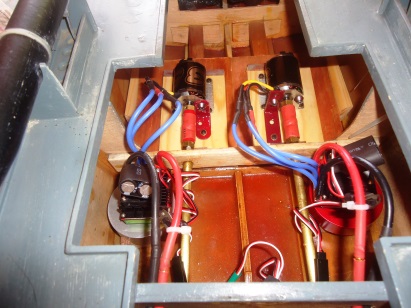
- boat type ESCs with water cooling such as those in the Turnigy range
Those of you looking to run boats with more than 15 volts (or 4 Lipo cells ) will need this type of ESC which can handle up to 6 or more cells dependent upon which model you select
-more costly than the car type
-work very smoothly in my experience
– only drawback is that they require a transmitter stick movement to pause at neutral before engaging reverse, so not good for a rapid stop !
INSTALLATION
Whilst some brushless motors and speed controllers (ESCs) will have 3.5 or 4mm gold plated connecting plugs already fitted, most will require you to solder and then insulate the connections with shrink tubing
Here is an example the type of connectors recommended between motor and ESC and corresponding shrink tubing
For lower powered brushless motors the XT60 type of connector plug is a good choice between batteries and ESCs, being easy to solder, requires no insulating after soldering and easy to join and separated once fitted in the boat (even with cold wet fingers…)
Lastly, when installing remember that the three wires between the motor and ESC can be connected in any way and simply change any two over if the rotation is not in the required direction
I am always ready to help with any questions you may have on brushless when we get together on Thursday mornings

Meanwhile, wishing you Happy Brushless Boating !!